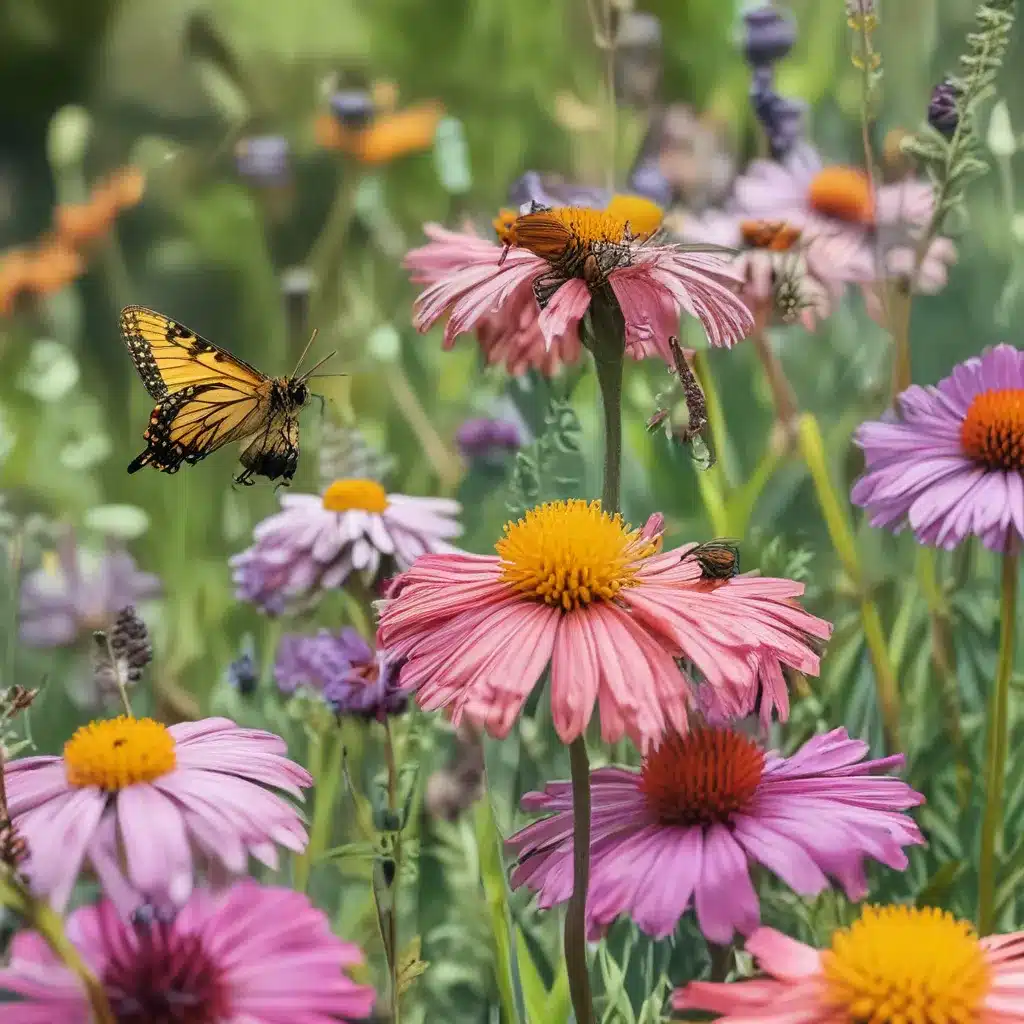
A Bee-Utiful Revelation
As I strolled through the vibrant garden at my local community-supported agriculture (CSA) service, I couldn’t help but be mesmerized by the buzzing activity all around me. Bees, butterflies, and other beneficial insects flitted from flower to flower, pollinating the lush plants and contributing to the rich tapestry of life thriving in this verdant oasis. It was then that I realized the crucial role these tiny creatures play in sustaining the very food we enjoy from our CSA.
The Pollinator Paradox
While we often take for granted the abundance of fresh, locally-grown produce available to us, the sobering truth is that many of our beloved pollinators are facing grave threats. From habitat loss and the overuse of pesticides to the impacts of climate change, these unsung heroes of our food system are in peril. The irony is that without a thriving population of pollinators, the very crops we rely on for our CSA bounty would cease to exist.
According to the Xerces Society, a leading organization in pollinator conservation, creating diverse, native plant habitats is one of the most effective ways we can support these beneficial insects. By understanding the specific needs of our local pollinators and designing our gardens and landscapes accordingly, we can turn our own backyards into veritable “pollinator paradises.”
Shelter Seekers
One of the first steps in creating a pollinator-friendly space is to consider the all-important need for shelter. Unlike the familiar honeybee, the majority of our native bee species are solitary and do not live in hives. Instead, they seek out cozy nooks and crannies to call home, such as hollow stems, dead wood, and bare ground.
As the experts at Cornell Cooperative Extension advise, incorporating structures like brush piles, woodpiles, and areas of exposed soil can provide invaluable shelter for these hardworking pollinators. Even a simple twig fence or rustic arbor can serve as an inviting abode. By creating a varied landscape with diverse nesting sites, we can welcome a wide array of bee species to our gardens.
Feeding Frenzy
Of course, shelter is only half the battle. Our pollinator friends also require a constant supply of nutritious food in the form of nectar and pollen. The U.S. Department of Agriculture emphasizes the importance of planting a diverse array of native flowers that bloom at different times throughout the growing season. This ensures a steady source of sustenance for our winged wonders.
When selecting plants, it’s important to consider both the size and shape of the flowers. Many of our smaller, solitary bees are unable to access the deep, tubular blooms that honeybees favor. Instead, they thrive on the plentiful nectar of plants in the mint and carrot families, such as wild bergamot, golden alexanders, and dill. By catering to the unique feeding preferences of our local pollinators, we can create a veritable smorgasbord that will have them buzzing with delight.
Pesticide Perils
Of course, the battle to support our pollinators doesn’t end with providing ample food and shelter. We must also be mindful of the dangers posed by pesticides, which can have devastating effects on beneficial insects. While we may be tempted to reach for chemical solutions to control pests or unwanted weeds, these toxic compounds can inadvertently poison our pollinator partners.
As the experts at Cornell Cooperative Extension advise, it’s crucial to use pesticides judiciously, if at all, and to always avoid spraying near flowering plants. By embracing organic and integrated pest management techniques, we can protect the delicate balance of our pollinator-friendly gardens and ensure that our CSA crops continue to thrive.
A Pollinator’s Paradise
By implementing these simple strategies – providing diverse shelter options, planting a vibrant array of native flowers, and minimizing the use of harmful pesticides – we can transform our gardens and landscapes into true “pollinator paradises.” Not only will this benefit the hardworking insects that sustain our food system, but it will also reward us with the beauty and wonder of a thriving ecosystem.
As I continue to explore the verdant oasis of my local CSA, I’m filled with a sense of purpose and pride. I know that by nurturing these pollinator-friendly habitats, I’m not just creating a haven for bees and butterflies – I’m also helping to safeguard the future of our food supply. It’s a realization that buzzes with hope and inspiration, reminding me that we all have the power to make a difference, one garden at a time.



